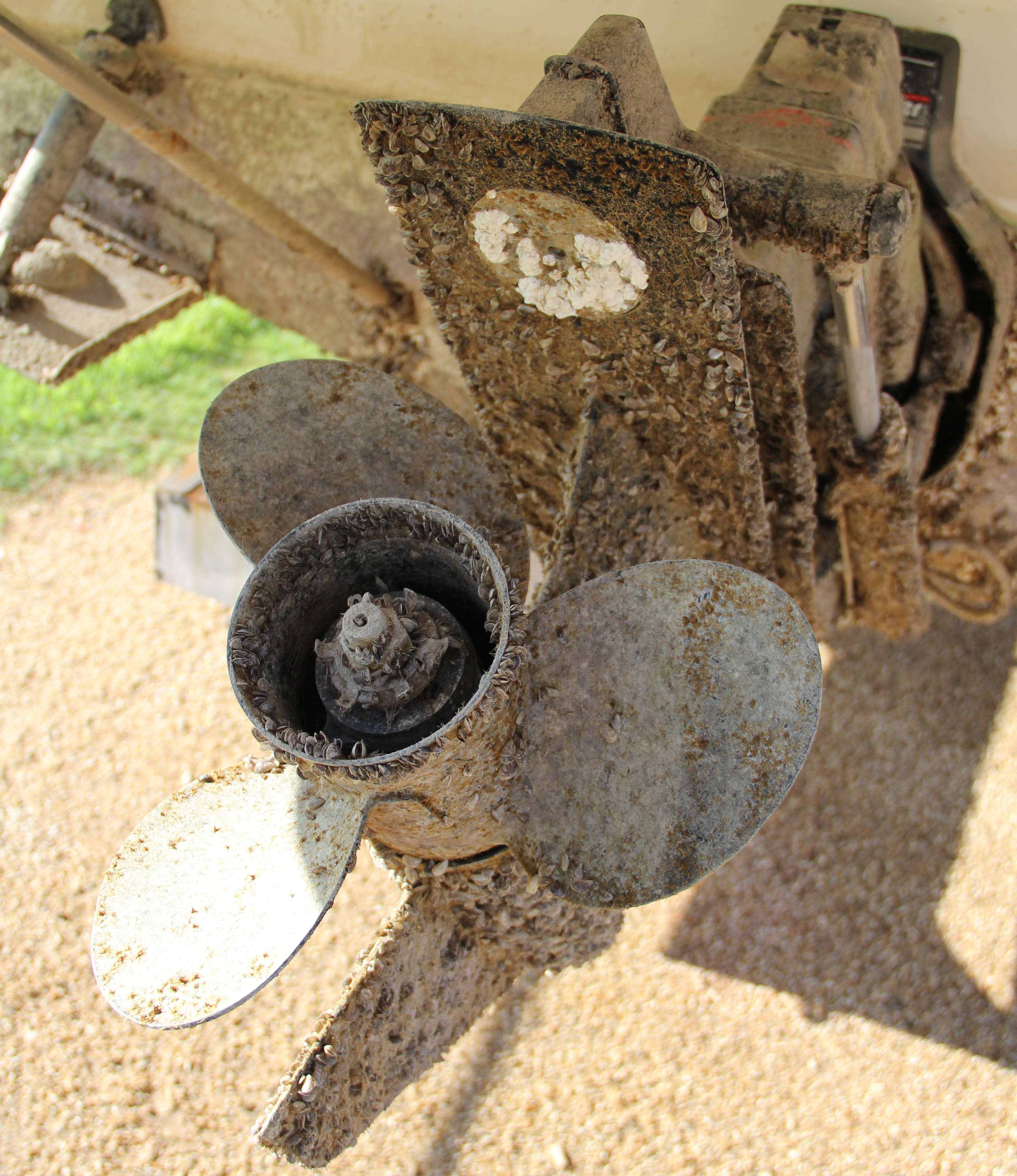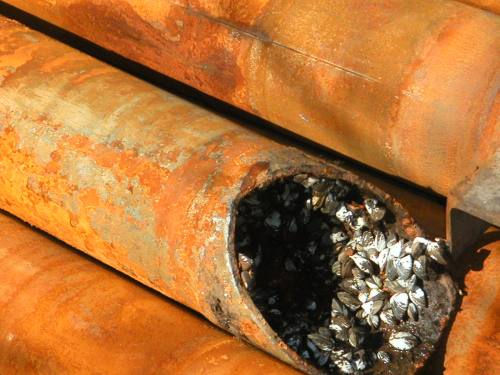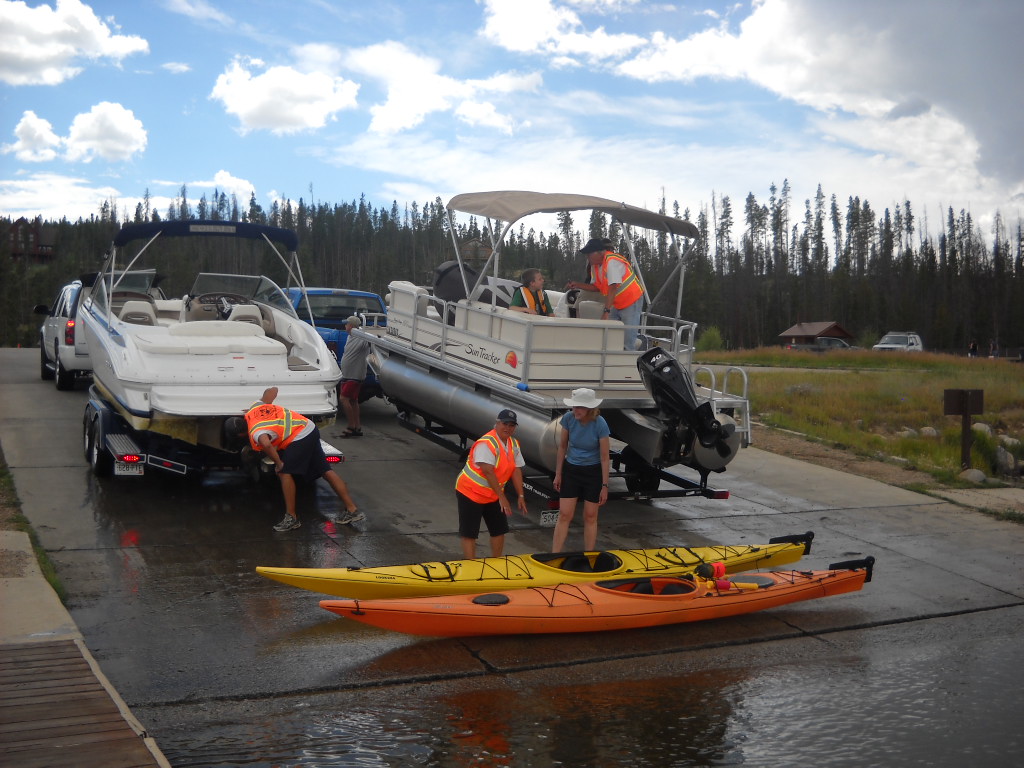
Saving our reservoirs from invading ‘cling-ons’
Like a page out of a science fiction novel, a wave of aquatic invaders are discretely slipping into reservoirs, hiding on boats and hitchhiking from one infected waterway to attack the next.
The main culprits are two varieties of freshwater shellfish, zebra mussels and quagga mussels, considered to be aquatic nuisance species. Since the late 1980s, when these mussels were discovered in the Great Lakes region, these intruders have spread to more than 35 states.
How did they get there? Mostly by boat, which can easily transport these aquatic hitchhikers.
“It just takes a few microscopic larvae entering the reservoir, or adults attached to a boat, and before you know it these mussels can overtake dams, valves and pipes, causing millions of dollars of damage to critical drinking water infrastructure,” said Brandon Ransom, Denver Water’s manager of recreation.
Denver Water opens four reservoirs to motorized boating around Memorial Day every year and has been inspecting the waterways for the invaders since 2008.
“When you compare the damage they can cause to proactively paying for boats to be checked before entering our facilities, it’s really a no brainer for us to invest in an inspection program,” said Ransom.
The work has paid off. No adult mussels have ever been found in Colorado. Pueblo Reservoir tested positive for zebra mussel larvae in 2007 and quagga mussel larvae in 2008. There has not been a detection in Pueblo for five years, and the reservoir has been removed from Colorado Parks and Wildlife’s “known positive waters” list.
Denver Water intends to help keep Colorado free from aquatic nuisance species, despite a cut to Colorado Parks and Wildlife’s inspection program funding.
Since 2008, Denver Water has paid $200,000 a year to help fund the inspections at Antero, Williams Fork and Eleven Mile Canyon reservoirs. After cuts to the Colorado Parks and Wildlife budget this year, Denver Water stepped in with another $100,000 to ensure continued safe motorized recreation.
“The mandatory watercraft inspection and decontamination program works to keep these invasive species out of Colorado’s waters, protecting natural resources, recreation and infrastructure,” said Elizabeth Brown, Colorado Parks and Wildlife invasive species coordinator.
At Dillon Reservoir, one of the more popular recreation destinations in the state, Denver Water pays $70,000 a year for the two marinas to perform the inspections. In 2016, Dillon and Frisco Bay marinas performed more than 1,500 total inspections for aquatic nuisance species.
“We are proud to be entrusted with the front line defense of such a valuable resource for Denver, Colorado and the entire Colorado River basin,” said Phil Hofer, director of marina operations at Dillon Marina.
So, how do you keep these invaders off your boat?
Colorado Parks and Wildlife has a simple strategy for all boaters to follow each time they exit a body of water: Clean, drain and dry.
As an added safeguard, new regulations passed in January 2017 require boaters to remove aquatic plants and water drain plugs before leaving a parking area after being on the water. It is now against the law to transport a boat and trailer over land with drain plugs in place or vegetation attached to the vessel. Boaters who don’t comply with this rule can be ticketed.
“We want people to come to these boating reservoirs for a fun day on the water,” said Ransom. “We just ask that visitors remain mindful of how critical these waterways are to Denver Water’s drinking water system and continue to be responsible stewards of these facilities.”
If you’re planning on boating on any of Colorado’s 200 lakes and reservoirs this year, check out all of the aquatic nuisance species regulations on the Colorado Parks and Wildlife website.



